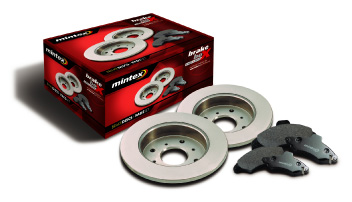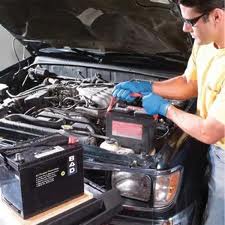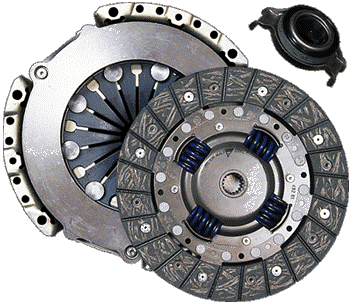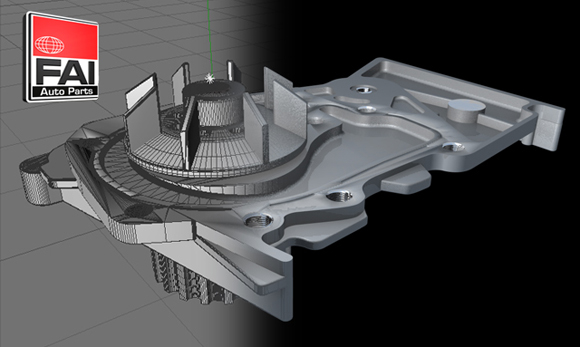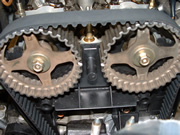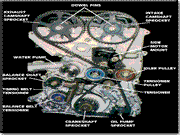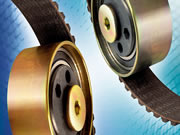Timing Belts
Mobile Timing Belt Replacement
Timing belts (cam belt) are found on most car engines now days even though it seems that vehicle manufacturers are returning to the timing chain which does not have to be changed at regular intervals compared to its counterpart the timing belt which is essential that it is checked for wear and tear a faulty timing belt can break if your engine has been identified as ' INTERFERENCE' type of engine this will lead to internal engine damage such as cylinder head, inlet and exhaust valve damage.
This repair of the damage can cost up to £1000 or more, even cost you a new engine; The cost of replacing a timing belt as part of a routine service could be as little as 5 to 10% of the repair cost following a belt failure. If you do not know your vehicles service history and have no history when your vehicles cam belt was last replaced then you should renew it!
Where possible the recommended intervals have been compiled from vehicle manufacturers' information. In a few instances no recommendation has been made by the manufacturer and the decision to replace the belt must be made from the evidence of a thorough examination of the condition of the existing belt.
Apart from the visible condition of the belt, there are several other factors which must be considered when checking a timing belt: Is the belt an original or a replacement... When was the belt last replaced and was it at the correct mileage... Is the service history of the vehicle known... Has the vehicle been operated under arduous conditions which might warrant a shorter replacement interval... Is the general condition of other components in the camshaft drive, such as the tensioners, pulleys, cam belt guides and other ancillary components driven by the timing belt, typically the water pump, sound enough to ensure that the life of the replacement belt will not be affected.
If the condition of the existing belt appears good, can you be satisfied that the belt will not fail before the next check or service is due. If the belt does fail, have you considered the consequences. If the engine is an INTERFERENCE type then considerable expensive damage may well be the result.
How often timing belts need to be replaced will depend on the type of engine. Most vehicle manufacturers release timing belt replacement schedules this can be set by mileage or time whatever comes first typical mileage can be belt between 34,000 miles and 100,000 or five to ten years this is just a guide.
Vehicle Manufacturers will cover themselves my stating within their guide "inspect and replace if necessary" this puts the decision in the mechanics hands his or hers experience will count making the right choice. The mechanic will inspect the belt for oil contamination , wear and tear he or she will also inspect guides, pulleys right down to the timing belt cover it all counts to keep your timing belt safe and in turn this will keep your vehicles belt from failing.
In the internal combustion engine application, the timing belt connects the crankshaft to the camshaft(s), which in turn controls the opening and closing of the engine's valves. A four-stroke engine requires that the valves open and close once every other revolution of the crankshaft. The timing belt does this. It has teeth to turn the camshaft(s) synchronised with the crankshaft, and is specifically designed for a particular engine. In some engine designs, the timing belt may also be used to drive other engine components such as the water pump and oil pump.
Gear or chain systems can also be used to connect the crankshaft to the camshaft at the correct timing. However gears and shafts constrain the relative location of the crankshaft and camshafts. Even where the crankshaft and camshaft(s) are very close together, as in pushrod engines, most engine designers use a short chain drive rather than a direct gear drive. This is because gear drives suffer from frequent torque reversal as the cam profiles "kick back" against the drive from the crank, leading to excessive noise and wear.
Fibre gears, with more resilience, are preferred to steel gears where direct drive has to be used. A belt or chain allows much more flexibility in the relative locations of the crankshaft and camshafts. Camshaft drives, whether gears, belts or chains are also able to even out wear, since the chain or belt can be made such that the number of teeth on the belt is co prime to the number of teeth on the crankshaft and camshaft sprockets, thus ensuring that each tooth on sprocket does not end up on the same tooth on the belt repeatedly.
While chains and gears may be more durable, rubber belts are quieter in their operation (in most modern engines the noise difference is negligible), are less expensive and are mechanically more efficient, by dint of being considerably lighter, when compared with a gear or chain system. Also, timing belts do not require lubrication, which is essential with a timing chain or gears. A timing belt is a specific application of a synchronous belt used to transmit rotational power synchronously.
Timing belts are typically covered by plastic timing belt covers which require removal to carry out visual inspection. Engine manufacturers recommend replacement at specific intervals. The manufacturer may also recommend the replacement of other parts, such as the water pump, when the timing belt is replaced because the additional cost to replace the water pump is negligible compared to the cost of accessing the timing belt.
In an interference engine, or one whose valves extend into the path of the piston, failure of the timing belt (or timing chain) invariably results in costly and, in some cases, irreparable engine damage, as some valves will be held open when they should not be and thus will be struck by the pistons Indicators that the timing chain may need to be replaced include a rattling noise from the front of the engine.
When an automotive timing belt is replaced, care must be taken to ensure that the valve and piston movements are correctly synchronized. Failure to synchronize correctly in an can lead to problems with valve timing, and this in turn, in extremis, can cause collision between valves and pistons in Interference Engines. This is not a problem unique to timing belts since the same issue exists with all other cam/crank timing methods such as gears or chains.
The usual failure modes of timing belts are either stripped teeth (which leaves a smooth section of belt where the drive cog will slip) or delaminating and unravelling of the fibre cores. Outright snapping of the belt, because of the nature of the high tensile fibbers, is very uncommon.
Correct belt tension is critical a loose timing belt will whip, too tight and it will whine and put excess strain on the timing belt guide and tensioner which may cause the this parts to break under this excess load which will cause the timing belt to snap In either case belt life will be drastically shortened.
A timing belt is typically rubber with high-tensile fibres (e.g. fibreglass or Twaron / Kevlar) running the length of the belt.
Rubber degrades with higher temperatures, and with contact with motor oil. Thus the life expectancy of a timing belt is lowered in hot or leaky engines. Newer or more expensive belts are made of temperature resistant materials such as "highly-saturated nitrile" (HSN).
The life of the reinforcing cords is also greatly affected by water and antifreeze. This means that special precautions must be taken for off road applications to allow water to drain away or be sealed from contact with the belt.
Need your vehicle back on the road as soon as possible Mobile Auto Services can help you with this service please call us on 0800 999 4118 for complete mobile timing belt replacement service at your home or work place.

